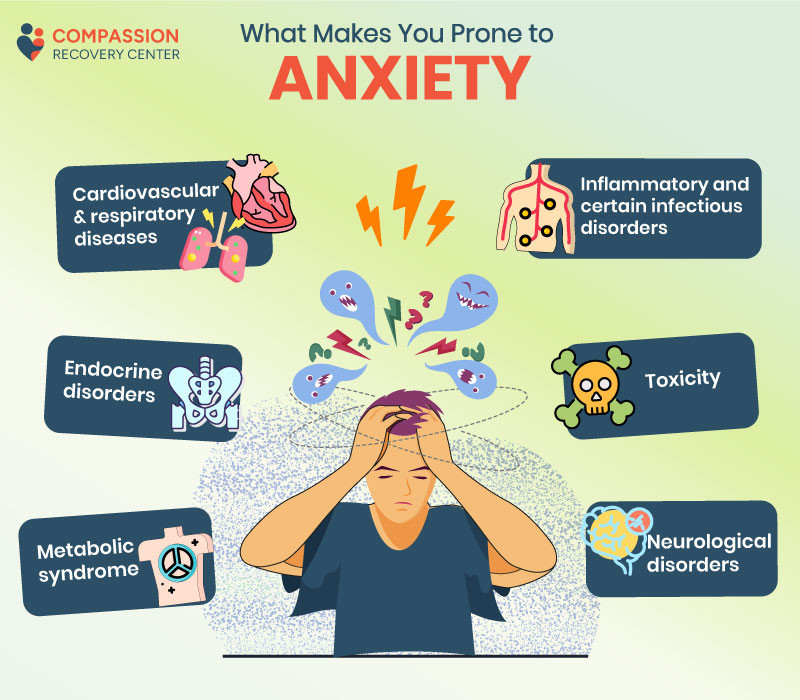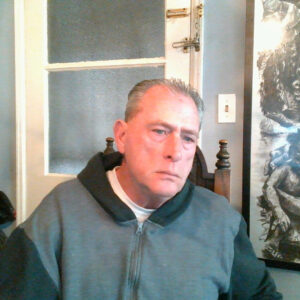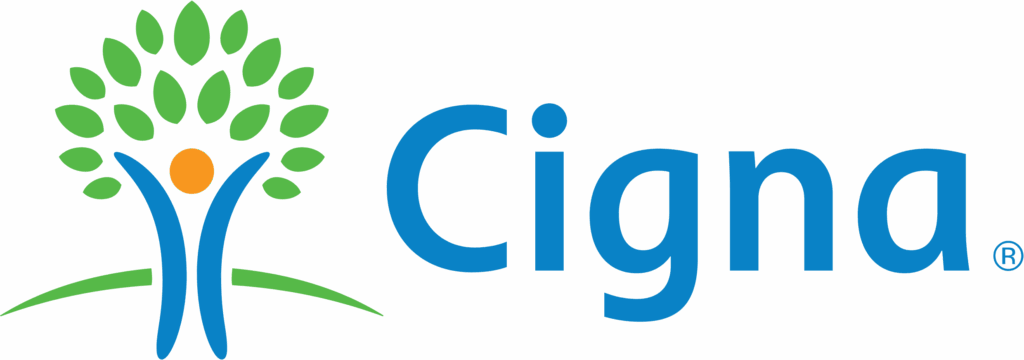The key to the burning issue, “How to calm an anxiety attack?” falls in the ultimate combination of the following strategies:
- Effective psychological therapies
- Successful physical health management strategies
- FDA-approved medication-based treatment
This article will let you discover anxiety-calming strategies in detail, along with doctor-approved guidelines to help you manage your anxiety attacks.
Not sure if your symptoms indicate anxiety? Call our confidential helpline at (877) 414-3007 and discuss your concerns with a DEA-certified mental health professional at Compassion Recovery Centers.
Identify Your Anxiety Symptoms
According to ADAA (Anxiety and Depression Association of America), you may encounter an anxiety attack without any specific reason owing to a massive build-up of previously unaddressed stress-inducing triggers.
However, the most common symptoms of anxiety include:
- Trembling
- Choking
- Shortness of breath
- Sweating
- Intensified heartbeat
- Numbness
- Unexplained sense of fear, etc.
You are Not Alone in Suffering From Anxiety!
Before diving deep into anxiety management strategies, it is pretty essential to be aware of the widespread impact of anxiety to ensure that you are not alone in this painful journey.
Here are some of the latest research statistics:
- The statistics recorded by the World Mental Health Survey depict the excessive lifetime prevalence of up to 31% in the USA.
- Although the affected US population counts up to 18.1% yearly, there is still a lack of awareness and upright guidance among people since only 36.9% of anxiety patients consider treatment for their anxiety disorders.
How to Deal with An Anxiety Attack by Yourself?
Here are a few ways to deal with anxiety by yourself:
- Try deep breathing exercises, along with meditation & yoga.
- Practice mindfulness and relaxation techniques.
- Make yourself a priority with self-care, proper nutrition, and a consistent workout routine.
However, a safer way out of anxiety is to seek professional help, as poorly managed and unaddressed panic attacks can lead to:
- Serious side effects of self-prescribed medications
- Intensified anxiety symptoms
- Increased chances of relapse and recurrence of anxiety attacks
- Decreased chances for quick improvement
- Development of a sense of unreliability and negativity related to treatment possibilities
Do you know? “Anxiety is the most widespread mental health disorder in the United States, with over 40 million adults suffering from anxiety disorders”.
How to Calm An Anxiety Attack Through Doctor-Approved Techniques?
If your stress levels stay high for longer durations, and you are suffering from distressing anxiety attacks, stay with us to disclose a detailed overview of 9 medically approved techniques to manage anxiety. So, before anxiety takes over you, let’s take it out of the way!
Technique # 1: Prevent Panic Attacks Through Prescribed Medications
Suppose you are someone who frequently gets panic attacks, and psychotherapeutic therapies alone cannot help you reduce your anxiety symptoms. In that case, exploring a pharmacological (use of medications) approach might be beneficial after proper consultation with your doctor.
Selective serotonin reuptake inhibitors (SSRIs) and selective serotonin-norepinephrine reuptake inhibitors (SNRIs) are globally recognized to be first-line drugs to treat anxiety disorders, majorly referring to generalized anxiety disorder (GAD), social anxiety disorder (SAD), and panic disorder (PD).
A research-supported, comprehensive list of only FDA-approved medications, along with their dosage units ranges, has been tabulated below:
* Please note that these FDA-approved drugs, suggested for respective anxiety disorders at certain dosage levels, are generalized research-based data, and you would need to consult your doctor and seek his prescription before utilizing any of the above-mentioned drugs.
| Class of Drugs | Name of Drugs | FDA-Approved Drugs For Anxiety Disorders | Recommended Dosages (mg/day) |
|---|---|---|---|
| SSRIs | Fluoxetine | PD | 20-60 |
| Escitalopram | GAD | 10-20 | |
| Paroxetine ER | PD, SAD | 27-75 | |
| Sertraline | PD, SAD | 50-200 | |
| Paroxetine | PD, SAD, GAD | 20-60 | |
| SNRIs | Venlafaxine (XR) | GAD | 75-300 |
| Duloxetine | GAD | 30-60 |
Other classes of FDA-approved drugs used to manage anxiety disorders and resulting anxiety attacks include:
- Benzodiazepines
- Antipsychotics
- Antihistamines
- Other anxiolytics
However, there might be various side effects of these drugs, including:
- Headache
- Insomnia
- Lethargy
- Dizziness & blurred vision
- Tiredness
- Dry mouth
- Excessive sweating & hot flushes
- Diarrhea or constipation
- Body weight fluctuations
- Changes in menstrual cycle
Therefore, it is pretty essential to consult expert mental health professionals for proper and personalized treatment strategies to deal with your anxiety attacks. Our DEA-certified professionals are only a call away (877) 414-3007.
Technique # 2: Psychoeducation as a Primary Tool to Manage Anxiety
In addition to medication-based treatment, psychoeducation plays a crucial role in anxiety management. It refers to the detailed information and guidance provided by professionals to people suffering from anxiety attacks and relevant anxiety disorders to help them better determine their thinking, behavior, and emotions.
Psychoeducation is responsible for enhancing awareness among the patients and their family members to improve the anxiety disorder mutually.
The significant elements covered in psychoeducation while targeting anxiety management include:
- Raising awareness regarding causes, symptoms, and possible treatments of anxiety
- Recognition of possible triggers
- Crisis management during unpredictable events
- Perception of early signs of anxiety relapse
- Determination of the right time and mode of seeking treatment
- Sorting out all the possible misconceptions about anxiety disorders and their symptoms
- Possible future perspectives regarding treatment outcome
According to the recent research studies, psychoeducation has proved to be significantly beneficial in anxiety management by:
- Preventing anxiety recurrence
- Promoting adherence to treatment guidelines
- Enhancing long-term effectiveness of anxiety treatment
Technique # 3: Cognitive-Behavioral Therapy Treatment for Anxiety and Stress Disorder
Cognitive-behavioral therapy (CBT) is one of the most effective psychotherapeutic models, which employs cognitive reforming, behavioral exposure therapy, problem-solving skill development, and psychoeducation approaches. The four core elements of CBT include:
- Thoughts
- Emotions
- Body physiology
- Behaviors
CBT can help you relieve your anxiety attacks through the following strategies:
- It helps you determine your particular mental health problem while focusing on solutions.
- It is highly structured and assists in setting practical goals towards mental well-being.
- It provides a collaborative set of activities to share with your therapist.
Moreover, being an integrated and complicated psychotherapeutic approach, you might need the help of highly accredited mental health professionals who can guide you better on how to practice cognitive behavioral therapy effectively.
“You don’t have to control your thoughts. You just have to stop letting them control you.”
– Dan Millman
Technique # 4: Try Slow Diaphragmatic Breathing to Calm Down
As a popular relaxation technique, slow diaphragmatic breathing is recommended as a daily practice for at least 10 minutes twice a day to help calm an anxiety attack during a triggering situation.
Here are some of the useful tips to practice the slow diaphragmatic breathing at your home:
- Sit or lie down comfortably with your shoulders relaxed.
- Put one hand on the upper chest and the other below your ribs.
- Take a deep breath with your nostrils while the lower hand moves upwards.
- Pause and keep breathing out slowly and consistently while counting up to 5.
- With each practice, aim to increase the count while exhaling.
- Before another inhale, hold and pause again for nearly 2-3 seconds.
- Repeat the above-mentioned steps consistently.
You will feel much more relaxed after practicing such slow, deep breathing exercises.
Technique # 5: Guided Imagery to Reduce Anxiety
Guided imagery is quite an effective cognitive therapy that regulates your anxiety symptoms by inducing pleasant and soothing imaginations in your mind. It works by diverting your mind from pain or discomfort to a joyous feeling in your subconscious mind.
Guided Imagery is a prevalent mental health approach against anxiety, for it gives instant relaxation to your racing thoughts. It has proven to exert a significant impact on primary body functions, such as:
- Metabolism
- Cortisol levels in the body (directly linked to stress levels)
- Digestive & immune system functioning
- Breathing & heart rate monitoring
- Blood pressure & cholesterol levels
- Mood, including depression & anxiety levels
However, if you are still not sure how anxiety affects you or wonder if you are suffering from high-functioning anxiety, you can reach out to our Legit Script Certified mental health professionals who have over 35 years of combined experience with 1500+ successful cases.
Technique # 6: Practice Self-Care & Soothing Activities for Long-Term Anxiety Management
After reviewing all the complex medicated and psychotherapeutic techniques to calm your anxiety, you can also opt for these simple self-care activities that can help you manage your anxiety on a long-term basis.
There are a significant number of soothing activities used to manage anxiety on a long-term basis, such as:
- Yoga & meditation
- Aromatherapy (Smell therapy)
- Praying
- Nature therapy
- Sound therapy
- Pleasant visualizations
- Autogenic training (Employing the mind’s power to calm the body)
- Body awareness exercises
- Somatic therapy
Still, if you do not want the hassle of finding out which soothing activities will suit you, you can choose from the holistic activities offered at one of the most effective therapy programs.
Technique # 7: How to Achieve Mindfulness for Relieving Stress?
Mindfulness is a calming strategy that allows you to control anxiety without the need to control your mind. You tend to observe, process, analyze, and accept your body’s
response to unknown or unreal fears.
The two significant elements of mindfulness are:
- Attention
- Acceptance
The first element, attention, denotes that you need to redirect your focus towards the present moment in your precious life. You can do it by giving yourself to your senses: hearing, smelling, seeing, touching, or tasting anything you can in your surroundings.
However, the second element, acceptance, signifies that you must observe your surroundings without judgment and let acceptance lead you toward gratitude.
Overall, such mindfulness strategies enable you to feel mentally peaceful and learn the importance of gratitude in life.

Technique # 8: Valuable Role of Nutrition in Treating Anxiety
According to recent scientific research studies, consistently eating balanced nutrition has been proven to impact anxiety management positively.
Suppose you are looking for doctor-approved nutrition guidelines to alleviate your anxiety and minimize the chances of having an anxiety attack. In that case, some of the significant research-supported tips are mentioned as follows:
- Avoid caffeine and alcohol while keeping yourself hydrated sufficiently.
- Try not to skip meals since longer gaps in meals lead to imbalanced blood sugar levels, further triggering underlying anxiety symptoms.
- Prefer to take complex carbohydrates as they help in even blood sugar levels.
- Prioritize antioxidant-rich foods, including certain fruits, berries, vegetables, nuts, spices, and beans.
- Include foods rich in magnesium, zinc, and omega-3 fatty acids in your daily meals.
- Incorporate asparagus and probiotic foods in your diet as well.
Technique # 9: Exercise; A Holistic Remedy for Anxiety
Apart from nutrition, exercise is also scientifically proven to improve anxiety attacks and other anxiety symptoms in diversified ways. You just have to find the type and pace of exercise most suitable to your unique body type and metabolism.
According to the federal policy, the physical activity guidelines for Americans refer to:
- 150 minutes of average-intensity exercise weekly
- 75 minutes of high-intensity exercise weekly
- A combined approach towards both average- and high-intensity physical activities
These physical activity guidelines can help you organize your workout routine. However, if you are still confused, you can opt for guidance from certified mental health professionals, who would enable you to determine the most appropriate and customized exercises that are genuinely effective for you.
Get your question answered now.
How Can We Help You to Treat Anxiety Attacks at CRC
Being a Legit Script Certified Treatment Center, Compassion Recovery Centers (CRC) provides various mental health services to ensure safety among psychiatric patients and promote community health. Its Anxiety Therapy Center in Orange County offers the following services:
- Highly skillful and customized evaluations, along with free-of-cost consultations, are provided to determine the severity of anxiety disorders.
- Evidence-based practices, including cognitive behavioral therapy, are pretty effective for anxiety management at both mind and physical levels.
- Holistic therapies, such as yoga, meditation, exercises, emotional regulation, nutrition therapy, as well as relaxation strategies, induce long-term coping skills against anxiety, preventing relapse or recurrence.
What Do Our Valuable Clients Say About The Anxiety Therapy Program at CRC?
“Well-rounded program and great people running it. They are compassionate about what they do, and their patients are no exception to that rule. Do you want to recover? Come here,”
Says CRC alumna Heidi Hess
Moreover, if you want to seek professional help from the comfort of your home, you can also choose to get the telehealth services offered by CRC or fill out our confidential contact form. The DHCS-certified team of mental health experts will help you explore the best treatment options for you or your loved ones. Just call at (877) 414-3007.
Frequently Asked Questions about Techniques on How to Calm an Anxiety Attack
Some of the most common questions posed by people suffering from anxiety disorders and looking for ways how to calm an anxiety attack are answered below briefly:
What is the 333 Anxiety Rule?
The 333 anxiety rule refers to a profoundly effective grounding technique, which enables you to utilize your observational senses to redirect your mind from an anxiety state to a calmer present moment. It works by contemplating:
- Three things in your current sight,
- Any kind of three things in your hearing range at present,
- Lastly, there are three things you can feel by touching in your current moment.
Can Anxiety Cause Seizures?
Since anxiety is directly linked to elevated stress levels, it might induce physical symptoms like those of seizures in certain patients suffering from anxiety disorders. However, it is more likely to happen in epileptic patients.
What is the Difference Between Acute and Chronic Anxiety?
According to research studies, acute anxiety refers to an intense response toward an unpleasant event both psychologically and physiologically. On the other hand, a prolonged duration of overwhelming stress levels is termed chronic anxiety.
Which Are the Best Somatic Exercises for Anxiety?
As one of the most effective psychotherapies, somatic exercises offer soothing physical activities while ensuring mindfulness. Some of the best somatic exercises are:
- Grounding techniques
- Breathing exercises
- Somatic yoga
- Progressive muscle relaxation
- Body scanning
- Self-massage at specific points
- Walking meditation
Does Insurance Cover Anxiety Treatment Programs at CRC?
Compassion recovery centers (CRC) prioritize the needs of their patients without letting financial constraints interfere with their progress toward well-being. The prominent insurances covered include:
- AETNA
- ANTHEM
- BLUE SHIELD
- CIGNA
- UNITED HEALTHCARE
Suppose your insurance plan does not fall in the above-mentioned categories. In that case, you can still enquire about your insurance program by calling (877) 414-3007 since CRC is also connected with many other insurance carriers.
Resources
- Anxiety Disorders – Facts & Statistics. Anxiety & Depression Association of America (ADAA). Available at: https://adaa.org/understanding
- Solmi, M., Radua, J., Olivola, M., Croce, E., Soardo, L., Salazar de Pablo, G., … & Fusar-Poli, P. (2022). Age at onset of mental disorders worldwide: large-scale meta-analysis of 192 epidemiological studies. Molecular psychiatry, 27(1), 281-295. Available at: https://www.nature.com/articles
- Bandelow, B., Michaelis, S., & Wedekind, D. (2017). Treatment of anxiety disorders. Dialogues in clinical neuroscience, 19(2), 93-107. Available at:
https://www.ncbi.nlm.nih/ - Garakani, A., Murrough, J. W., Freire, R. C., Thom, R. P., Larkin, K., Buono, F. D., & Iosifescu, D. V. (2020). Pharmacotherapy of anxiety disorders: current and emerging treatment options. Frontiers in psychiatry, 11, 595584. Available at: https://www.frontiersin.org/journ
- Medicines A-Z, NHS, UK. Available at: https://www.nhs.uk/medicines/
- Morgado, T., Lopes, V., Carvalho, D., & Santos, E. (2022). The effectiveness of psychoeducational interventions in adolescents’ anxiety: a systematic review protocol. Nursing Reports, 12(1), 217-225. Available at: https://www.mdpi.com/2039-4403/12/1/22
- Sarkhel, S., Singh, O. P., & Arora, M. (2020). Clinical practice guidelines for psychoeducation in psychiatric disorders general principles of psychoeducation. Indian journal of psychiatry, 62(Suppl 2), S319-S323. Available at: https://journals.lww.com/
- Baourda, V. C., Brouzos, A., Mavridis, D., Vassilopoulos, S. P., Vatkali, E., & Boumpouli, C. (2022). Group psychoeducation for anxiety symptoms in youth: Systematic review and meta-analysis. The Journal for Specialists in Group Work, 47(1), 22-42. Available at:
https://www.tandfonline.com/do - The key elements of cognitive behavioral therapy and the self-help approach. Beating your eating disorder. Cambridge University Press. Available at: https://www.cambridge.org/core
- How it works – Cognitive Behavioral Therapy (CBT). NHS, UK. Available at:
https://www.nhs.uk/mental-health/talking-therapies-medicine-treatments/ - Relaxation Skills for Anxiety. The University of Michigan. Available at:
https://medicine.umich.edu/sites - Diaphragmatic breathing exercises. Physiopedia. Available at:
https://www.physio-pedia.com/Diaphragmatic - Kumari, D., & Patil, J. (2023). Guided imagery for anxiety disorder: Therapeutic efficacy and changes in quality of life. Industrial Psychiatry Journal, 32(Suppl 1), S191-S195. Available at: https://www.ncbi.nlm.nih.gov/
- Guided Imagery. Whole Health Library. U.S. Department of Veterans Affairs. Available at: https://www.va.gov/W Strategies to Manage Anxiety & Stress. Anxiety & Depression Association of America (ADAA). Available at: https://adaa.org/tips
- Mindfulness meditation: A research-proven way to reduce anxiety. American Psychological Association (APA). Available at: https://www.apa.org/topics/mind
- Nutritional strategies to ease anxiety. Harvard Health Publishing, Harvard Medical School. Available at: https://www.health.harvard
- Physical activity guidelines for Americans. U.S. Department of Health & Human Services. Available at: https://health.gov/our-work/nutrition-physical
- Managing & Reducing Anxiety. AdultMentalHealth. org. Available at: https://adultmentalhealth.org//
- Epilepsy & Anxiety. Wexner Medical Center, The Ohio State University. Available at: https://wexnermedical.osu.edu/
- Chronic Stress. Yale Medicine. Available at: https://www.yalemedicine.org/c
- What is somatic therapy? Harvard Health Publishing, Harvard Medical School. Available at: https://www.health.harvard
Did You Know? According to WHO, one out of every seven teens is struggling with some sort of mental illness.










